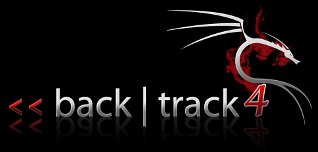Mar 1 2009
VMWare Workstation in BackTrack {3, 4} Live

Why?
There’s been a number of situations in the past where, even though I’m perfectly happy running BackTrack as a host operating system, it would nonetheless be sweet to run any number of virtualized guest machines as well. For instance, if exploit code or a tool has been released in Windows (e.g. Ferret/Hamster) but is not yet, or will never be, released for Linux. Or if you want to do research in a virtualized network environment. And of course in general, it’s just a good idea to keep your options open, to sharpen your axe before you go out and chop some wood. My virtualization software of choice is VMWare Workstation, especially the newer versions >= 6.5. I’m not going to go into why I favor VMWare over other options, but suffice to say that they are just the best choice for non-commercial virtualized environments (and, uhm, unity mode is kickass.) So this will be a quick run-through for you to create a customized .lzm file for BackTrack Live with a full and functioning install of VMWare Workstation.
How?
While on the road to creating a customized .lzm file, I was steering for the path of least resistance. Basically, I created a before- and after-install list of files across the entire file system. I then compared the two – the difference being the new files that were created from the install. Copy those files over to a subdirectory structure, and run dir2lzm. Place .lzm file into the appropriate directory, uncompressed at boot time. Done. (Here I have to add a disclaimer: this method probably can be improved upon, since it doesn’t take into account those files which the install did not create, but may have only modified. Perhaps checking modification timestamps would be better.)
Boot up to BackTrack Live, and lets get started:
mkdir ~/vmware-install-tracking/ cd ~/vmware-install-tracking/ find / | sort > before
Now that we have a list of files before the install takes place, it’s time for us to install VMWare. Once you’ve installed it, run it, customize your settings, enter your serial number, etc. Open a few virtual machines. Get your settings to a point where you’re comfortable with them – you won’t be able to modify them again after this point. Close VMWare.
find / | sort > after diff before after > new_files cat new_files | egrep -v "^---$" | egrep -v "^[0-9]" | egrep -v "[><] /dev" | egrep -v "[><] /mnt/live" | egrep -v "[><] /proc" | egrep -v "[><] /sys" | egrep -v "[><] /tmp" | egrep -v "[><] /var/run" | egrep -v "[><] /var/lock/subsys/vmware" | egrep -v "[><] /root/vmware-install-tracking/" | cut -d" " -f2 > required_files echo "/lib/modules/2.6.28.1/modules.dep" >> required_files # don't forget those modules!
The directory in the last line will vary based on current kernel version. At this point we have compiled a list of all the files and directories we need for the .lzm file. But we need a script that will parse through required_files and create a file/directory structure from it. I threw the following together in python, create_filestructure_from_filelist.py:
#!/usr/bin/python
import subprocess, os, sys
if len(sys.argv) is not 3:
print "Usage: " + sys.argv[0] + " [file list to parse] [destination path]"
exit()
dest_path = sys.argv[2]
if dest_path[len(dest_path) - 1] is '/':
dest_path = dest_path[0:len(dest_path) - 1]
try:
fp = open(sys.argv[1],"r")
except:
print "Error: Could not open file for reading!"
x = fp.readline().strip()
file_list = []
dir_list = []
while x:
if os.path.isdir(x):
dir_list.append(x)
if os.path.isfile(x):
file_list.append(x)
x = fp.readline().strip()
for dir in dir_list:
if not os.path.isdir(dest_path + dir):
subprocess.call('mkdir -p ' + dest_path + dir,shell=True)
for file in file_list:
file_components = file.split('/')
containing_dir = '/'.join(file_components[0:len(file_components) - 1])
if not os.path.isdir(dest_path + containing_dir):
subprocess.call('mkdir -p ' + dest_path + containing_dir,shell=True)
subprocess.call('cp ' + file + ' ' + dest_path + file,shell=True)
Now all thats left to do is call the script, create the .lzm, and put it in the loadtime modules directory. Make sure the destination path in the script has enough storage space.
./create_filestructure_from_filelist.py required_files vmware-tmp/ dir2lzm vmware-tmp/ vmware.lzm mv vmware.lzm /mnt/sdb1/bt4/modules/
Reboot to your live distribution. You now have a working install of VMWare Workstation on your BackTrack Live. Enjoy!


